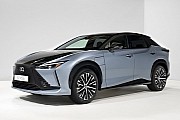history
If American car-manufacturer heads had been warned about a Japanese take-over in the mid 80's, they would have almost certainly laughed at the prospect. Humorous or not, the Japanese did conquer US, not through mecha led wars but rather through anime and cars. However, before the mild-assault began, there were a series of weird meetings held in secrecy in chairman chambers.
Such a meeting was held in 1983 between Toyota chairman Eiji Toyoda and his company executives. Toyoda had not invited his enforcers over for cookies and tea but to question them about the possibility of developing a luxury-car line that could successfully compete with American brands. The project was labeled as F1 -Flahship 1- and proved to be a most lucrative endeavor. The result was a vehicle that later became known as the Lexus LS 400 prior to its US premier.
The LS 400 was not just a car that took time and resources to built. In researching American luxury-product consumer habits and lifestyles, the Japanese went as far as renting a house in Laguna beach in order to observe their “subjects” closely. Offspring of long-gestating consumer research and cutting-edge engineering, the LX 400 was a hit.
Endorsed by insightful advertising, the LS 400 made its entrance at the North American Auto Show in Detroit, 1989 where it was one of the main attractions. And how could it not have been after 24 engineering teams and a few thousands employees worked on 450 prototypes at the cost of a paltry $1 billion investment?
The main advantage Lexus had over Acura, that had reached US markets 3 years before, was its uniqueness. Unlike the first Acura models which were sold as rebadged Hondas, the Lexus held little connections to Toyota design patterns.
Silent, ergonomic, powerful and reliable, the LS became a fierce competitor for European imports such as Mercedes Benz and BMW, whose sales drastically dropped following Lexus' trumpeting market entrance.
Models like the ES 250 followed which along the LS registered enough sales to allow the brand expanding through an 81-dealership network. During those first years of sales, Lexus became the top-selling luxury car in the U.S. Things were going smoothly for the Japanese manufacturer, just like its cars, and in 1991, two new models were released: the SC400 coupe and the ES 300 sedan. The latter was marketed as a replacement for the ES 250 and quickly became the company's best selling sedan.
Following the release of a heir to the LS 400 and the Toyota Aristo-based series of the GS, Lexus entered the sport utility vehicle segment in 1996 with the launch of the LX 450, a large car based on the Toyota Land Cruiser 100. By 1998, Lexus would release the RX, a top-selling crossover based on Toyota's Camry model as well as a new series of the GS. During the following years, further technological improvements such as the introduction of the Lexus Hybrid Drive system on the 2005 RX 400h, resulted in an even greater sales increase.
Things were so good for Lexus that it has constantly grown since its inception. The brand has been introduced to the Japanese home-market in 2005 as well as it has in other regions of Asia and South America as well as Australia and Europe. By 2007, Lexus had spread in over 50 countries and it continues to grow. The company's “pursuit of perfection” is fronted by its current line-up, comprised of the IS, LS and RX series among others as well as the avant-garde LF-A concepts.
expand




















